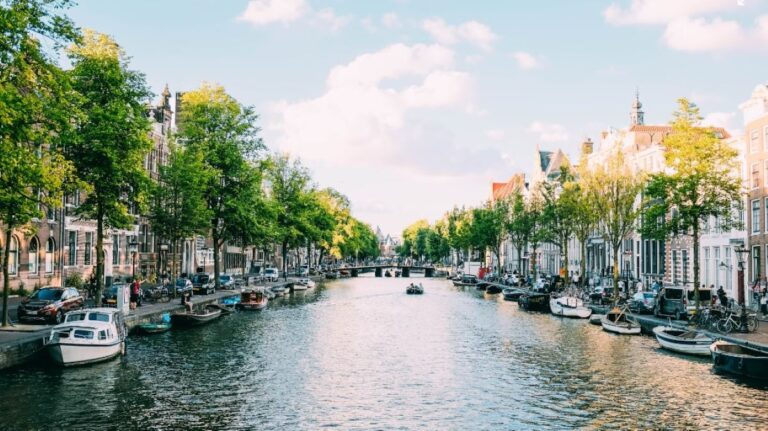In every city where people of all ages can safely walk or cycle, where public transportation is efficient and punctual, and where automobiles don’t dominate every space, a healthier urban environment thrives.
This vision is not unattainable. For years, many Dutch cities have embodied this ideal. Some made a bold choice to adopt a less car-dependent urban model as far back as the 1970s.
Table of Contents
Embracing change: the Dutch paradigm shift
In the 1970s, the Netherlands grappled with a crisis similar to what many cities worldwide face today: a concerning number of road fatalities, including children.
Dutch society rebelled. The “Stop de Kindermoord” (“Stop the Child Murder”) movement flooded the streets with thousands, demanding a paradigm shift in urban design. And the government listened.
Rather than continuing to prioritize cars, Dutch cities began redesigning their spaces to favor pedestrians, cyclists, and public transport.
Protected bike lanes, pedestrian areas, narrower streets with reduced speed limits—just a few measures adopted to reduce car dependency and reclaim streets for people. And the outcome?
Farewell to the automobile: the results of the revolution
The results of this revolution are evident. Today, Dutch cities are a haven for cyclists and pedestrians of all ages. Children, adults, and seniors can move safely without the constant fear of being hit.
Efficient and punctual public transport provides a viable alternative to cars for many daily commutes. The rate of road fatalities has plummeted drastically since the 1970s. It’s so promising that after a post-COVID lockdown rebound, the Dutch government rushed to promise a plan to eliminate accidents entirely by 2050.
But the benefits extend beyond road safety. Cities less dependent on cars also mean less smog, a major contributor to premature deaths globally. They mean fewer greenhouse gas emissions, a crucial step in combating climate change. And they mean more accessible cities for all, including children, persons with disabilities, seniors, and those who cannot afford a car.
A future beyond automobiles
In the future, autonomous, collective, and electric taxis will contribute to reducing the number of circulating cars, but these solutions won’t suffice without a paradigm shift. It’s a matter of political will.
Undoubtedly, such a change will require significant investments and long-term vision. But the costs of current car dependence, in terms of human lives, public health, smog, and environmental damage, are simply too high to ignore.
And many solutions, like adding bike lanes and creating “open streets” with limited traffic, can be implemented at relatively low costs with immediate benefits.
Above all, what’s needed is the political will to challenge the status quo and embrace a new city model. A model where people, not cars, are at the center. A model where moving around is a pleasure, not a stress or danger.
Reducing car dependence in our cities isn’t just about transportation policies or urban planning. It is a choice of civilization. It’s deciding that we want safer, healthier, fairer, and more livable cities for all. It’s recognizing that public space is a precious asset that must be shared equitably and sustainably.
Read also: When is a city considered smart? These are the main features of the cities of the future












